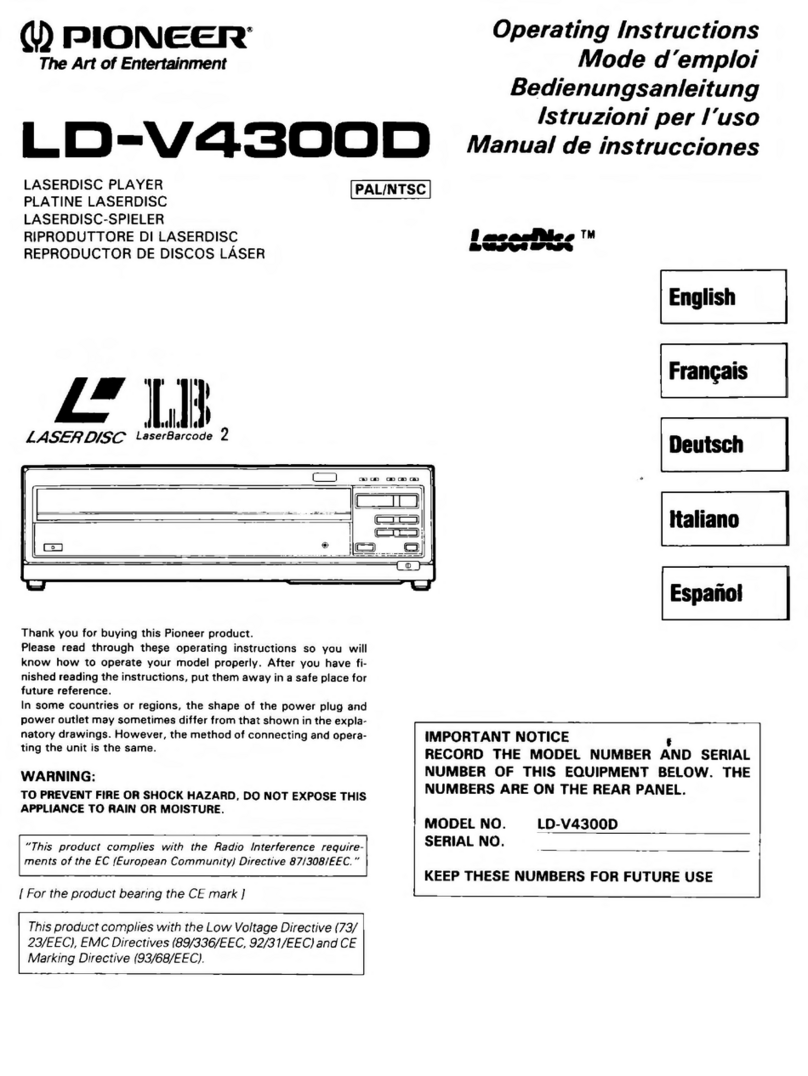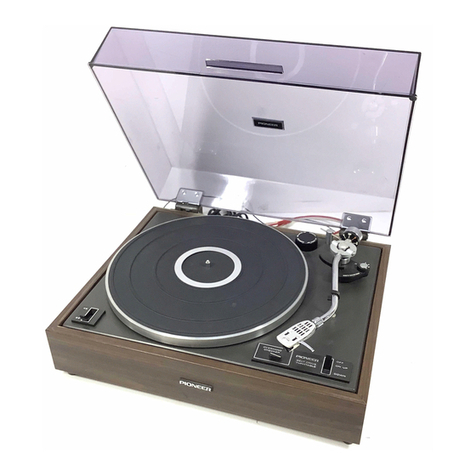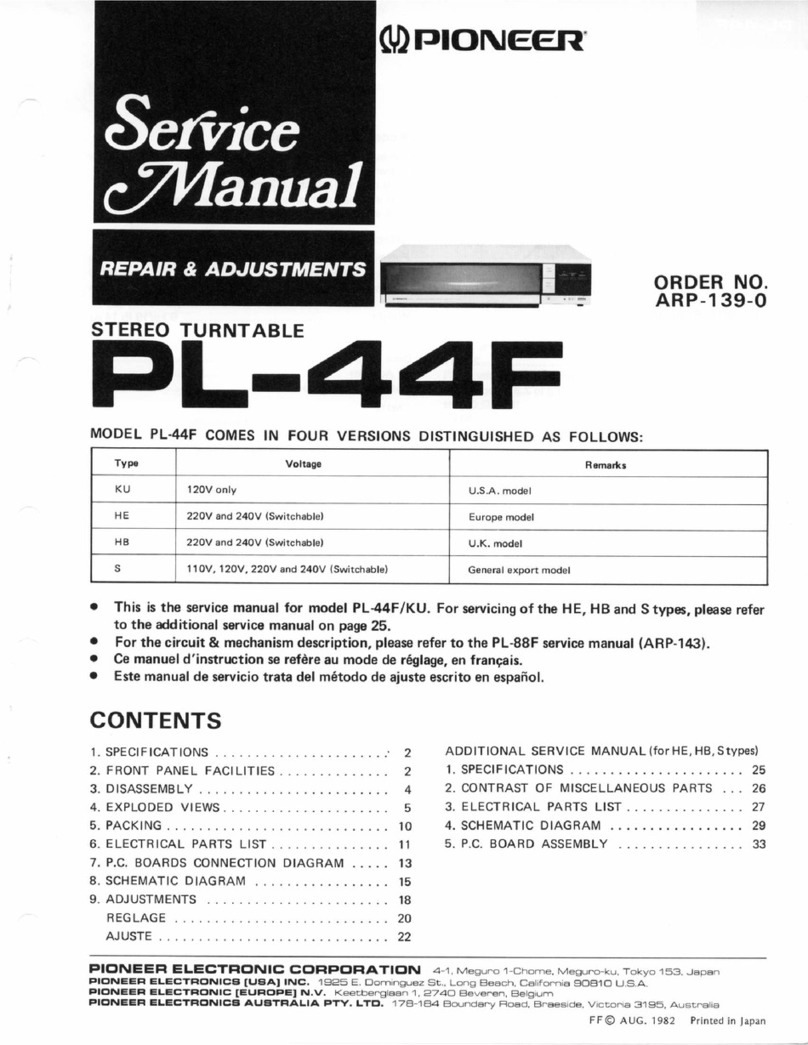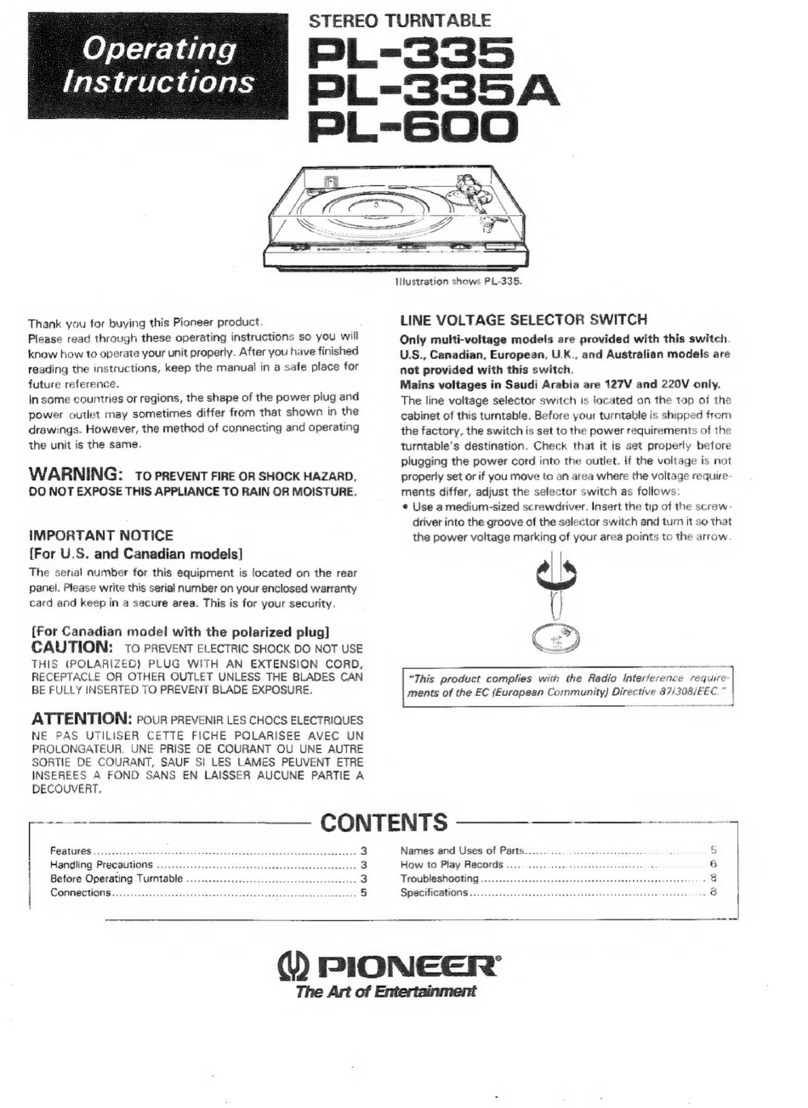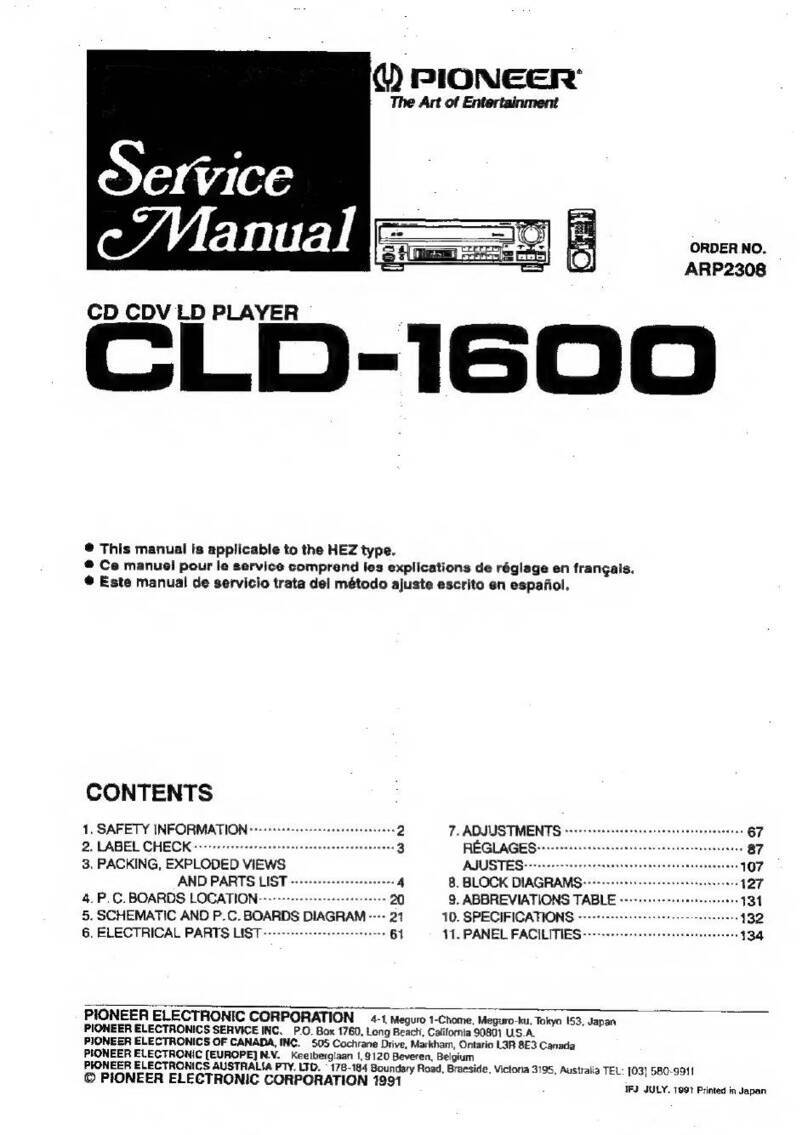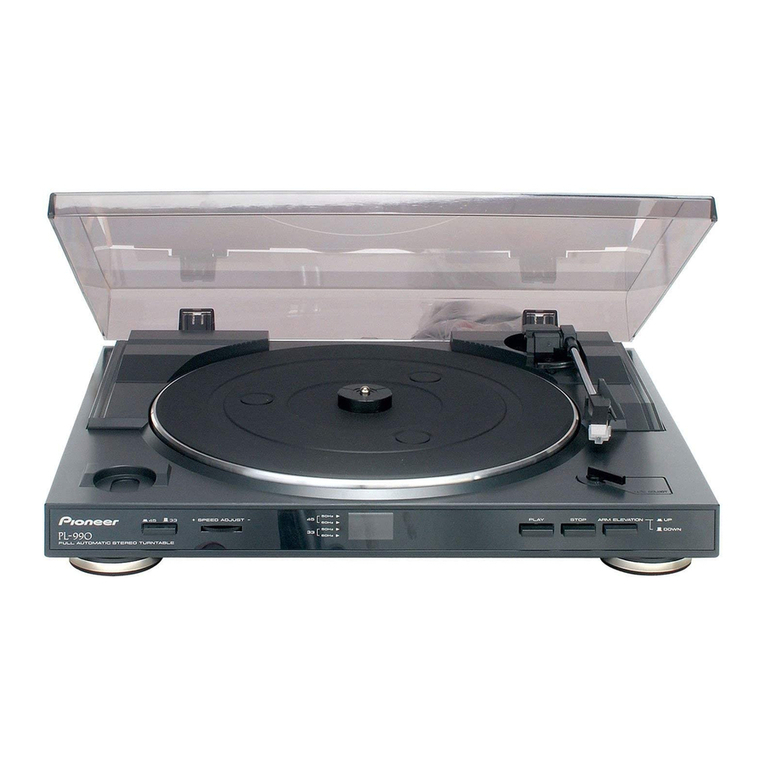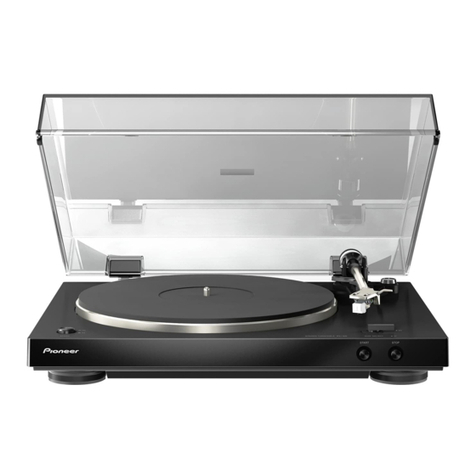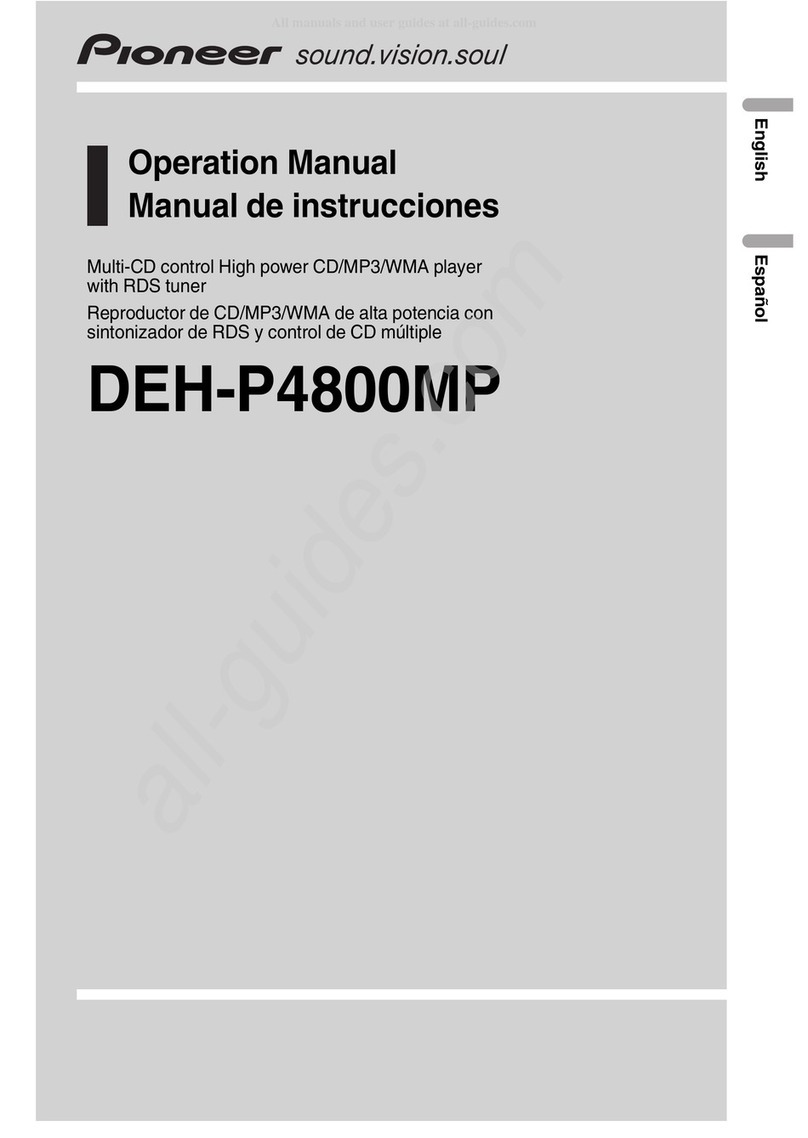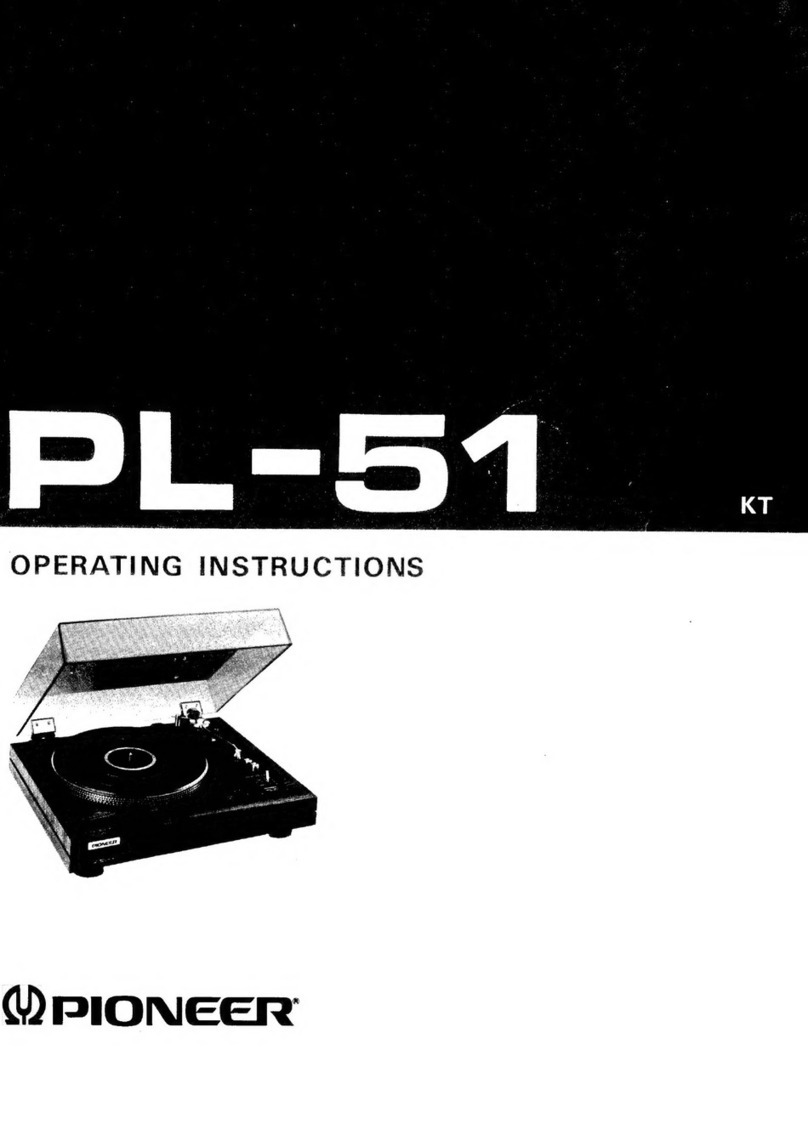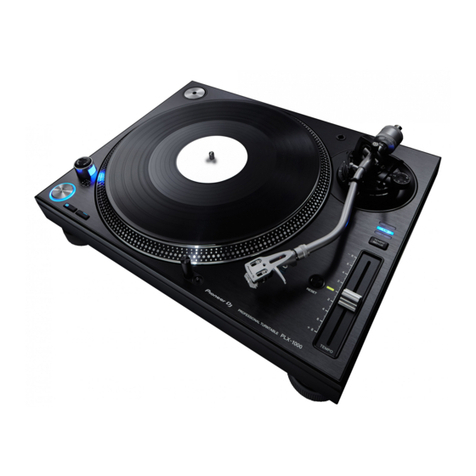
t@ Drsc
srzE
swrrcH
Selectsthe switchthatcorresponds
to thesize
of the
rec-
ord
youwant
to hear
for auto
play
operation.
12"30 . . . For
30cm
records
10"25 . . . For
25cm
records
7"17 . . . ForlTcmrecords
o Used
to select
the record
size
when
depressed.For in-
stance,
when
the30cmindicator
lights
up,
depress
the
switchfor the 25cm
position,
and
depress
it again
for
the 17cmposition.
Depressing
the switch
once
more
setsit to the
30cm
position.
o When
the power
switchis
turned
ON,theturntable
will always
be set for records
with a diameter
of
30cm
andthe
corresponding
light
will
come
on.
NOTE:
This sruitch will not work if depressed when the tonearm is
moving
(auto lead-in,
auto-return,
auto cut).
@ REPEAT
swtrcH
Press
this switchfor repeat
play.
When
pressed
the indi-
cator
will lightup, andthe record
will beplayed
again
(refer to page 12 for further details
on repeat
play).
Press
this
switch
again
to release
it. The indicator
will go
off andtherepeat
play
function
will bereleased.
NOTE:
This slitch will not work if depressed wh6n the ton€arm is
moving (auto-return, auto cut).
@ enruELEVATIoN
swtrcH
Usethis switchto interrupt
play temporarily
or to per-
form
manual
play.
When
the DOWN
position
is depressed
thetonearm
will
descend
and
whenthe UP
position
isdepressed
thetone-
arm will rise.
These
two operations
will beperformed
al-
ternatelyevery
timethe
switchis
pressed.
NOTES:
r When th€ POWER switch is setto ON, the tonearm will start
in the UP position.
r This switch will not work if depressed
when th€ tonearm is
moving (auto lead-in,auto-return. auto cutl.
o When the switch is at UP, tho auto-return cancelling mecha-
nisrnis actuated and so there will be no auto-roturn.
O sranr/srop
swtrcH
Press
thisswitch
for auto
play.
The
platter
will start
to ro-
tate, the tonearm
will automatically
moveover to the
edge
of therecord
and
play
will begin
(auto
lead-in).
lf this switch is pressed
during play, the tonearm
will
automaticallyreturn
to thearmclamp
position,
the plat-
ter will stop rotating
andplay will be suspended
(auto
cut).
NOTE:
This saritch will not work if depressed when the tonearm is
moving(autolead-in).
PL-L1 Clclc'
@ REMoTE
opERATtoN
KNoB
Used when moving the tonearm by remote control.
Rotate
counterclockwise
to move
the
tonearm
to theleft.
Rotate
clockwise
to move
thetonearm
to theright.
NOTE:
Whon the arm elevation switch isat DOWN or auto lead-in,
auto
cut and auto-return, the tonearm does not move even when the
remote operation is released
and th6 knob rotated.
@ ToNEARM
The tonearmfunction is to apply the correct
tracking
force
to thecartridge.
maintbin
thisvalue
precisely
and
al-
lowthe
stylus
to trace
therecord
grooves
accurately.
Thetonearm
can
be
operated
manually
with yourhand
or
remotely
withtheremote
operation
knob.
lt iscoupled
to
themotorswitch
andwhen
it moves
across
to therecord,
the platter
rotates
and it stops
whenthe tonearm
isre-
turnedtothe
armclamp
position.
NOTE:
When the POWER switch is at OFF, the ton€arm cannot
be moved by either manual or remote operation. lf it is forced
at tho OFF position, this may result in damage so always re-
member to set the POWER switch to ON when moving it.
@ ARM cLAMp
Used
to secure
the
tonearm.
To secure
the
tonearm,
move
it to the
right
and
then
push
down on the clamp.
When
you do not intend
to use
the
turntable,
secure
thetonearm
in this
way.
The
tonearm
is
released
when
theclamp
israised.
@ anru
REsr
Thissecures
the tonearm
pipe.
When
playing
a record,
rotate the arm rest counterclockwise
and release
the
clamp.
When
not playing
a record,
set
the
arm
elevation
switch
to UP( ! ) and
thenrotate
the
armrest
clockwise
and
secure
thepipe.
NOTE:
When the arm elevation sritch is at DOWN (l l, ttre tonearm
pipe cannot be secured. Make sure this sl,tritchis set to tho UP
(
! l position.
@ pIRIIER/RUBBER
pLATTER
MAT
When
thetonearm
ismoved
and
power
is
supplied
to the
turntable,
the platter
will start
rotating
atthe
setrotation
speed.
The rubber
platter
mat stabilizes
the records
and
also
absorbsexternal
vibration,
@
ousr covER
Keep
thisclosed
unless
operating
thecontrols
ortonearm,
or changing
records.
This
serves
to keep
dust
off of there-
cords
during
record
play.Whenfully opened
and
pulled
straightup, this dust cover
can be removed
from the
cabinet.
n
n'
t,
I
